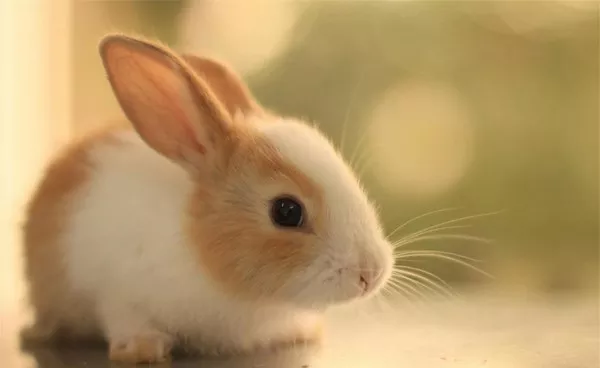Rabbits, beloved for their gentle nature and fuzzy charm, make wonderful companions for pet owners worldwide. As responsible caregivers, it is crucial to provide them with a well-balanced diet that meets their nutritional needs. While hay and pellets are staples in a rabbit‘s diet, treats can be an enjoyable addition when chosen wisely. In this comprehensive guide, we will delve into the world of rabbit treats, highlighting the importance of nutrition, exploring safe options, and offering practical tips for incorporating treats into your rabbit’s diet.
Understanding Rabbit Nutrition: The Foundation for Treat Selection
Before delving into the realm of treats, it’s essential to understand the nutritional requirements of rabbits. Rabbits are herbivores with complex digestive systems, and their diet primarily consists of high-fiber hay, fresh vegetables, and pellets. The key nutrients crucial for their well-being include fiber, protein, vitamins, and minerals.
Fiber Content: The Cornerstone of a Rabbit’s Diet
Fiber is paramount in maintaining a healthy digestive system for rabbits. High-fiber hay, such as Timothy hay, should constitute the majority of their diet. When choosing treats, it’s crucial to prioritize options that also contribute to their daily fiber intake.
Protein: Moderation is Key
While rabbits require protein for muscle development and overall health, excessive protein intake can lead to health issues. Treats with moderate protein content can be included but should not overshadow the rabbit’s primary protein sources.
Vitamins and Minerals: Supporting Overall Health
Essential vitamins and minerals, including Vitamin A, Vitamin D, calcium, and phosphorus, play vital roles in a rabbit’s well-being. Treats that offer additional nutritional value by providing these elements can contribute to a well-rounded diet.
Identifying Safe and Healthy Rabbit Treats
Not all treats are created equal, and some may even pose health risks to rabbits. When selecting treats for your furry friend, consider the following factors to ensure their safety and well-being.
Commercial Rabbit Treats: Read the Labels
Commercial rabbit treats are readily available in pet stores, but not all are created equal. Reading labels is crucial to understanding the ingredients and nutritional content. Avoid treats high in sugars, fats, and artificial additives.
Fresh Fruits and Vegetables: Nature’s Treats
Incorporating fresh fruits and vegetables into your rabbit’s diet is an excellent way to provide natural treats. However, not all fruits and vegetables are safe for rabbits. Consult a vet or reliable source to ensure you are offering rabbit-friendly options.
Herbs and Forage: Enriching the Diet
Herbs and forage can be an excellent addition to your rabbit’s treat repertoire. Dandelion greens, parsley, and mint are examples of safe and enjoyable herbs that can be offered in moderation.
Homemade Treats: A Personal Touch
For pet owners who prefer full control over their rabbit’s treats, homemade options can be a great choice. Simple recipes using rabbit-safe ingredients allow you to customize treats according to your rabbit’s preferences while ensuring nutritional value.
See Also:Suitable Vegetables to Feed Your Young Rabbit
Practical Tips for Treat Time
Now that we’ve established the importance of nutrition and identified safe treat options, let’s explore practical tips for incorporating treats into your rabbit’s routine.
Moderation is Key: Avoid Overindulgence
While treats can be a delightful addition to your rabbit’s diet, moderation is crucial. Overindulgence can lead to weight gain, digestive issues, and other health problems. Limit treats to a small portion of their daily intake.
Monitor Your Rabbit’s Health: Watch for Allergies or Sensitivities
Every rabbit is unique, and individual sensitivities or allergies may exist. When introducing new treats, monitor your rabbit for any adverse reactions such as changes in behavior, digestive issues, or allergic reactions. If concerns arise, consult with a veterinarian.
Interactive Treat Dispensers: Mental Stimulation
Treat time can also be an opportunity for mental stimulation. Interactive treat dispensers or toys can engage your rabbit’s mind, providing both physical and mental exercise.
Rotate Treats: Keep Things Exciting
Rabbits, like humans, appreciate variety. Rotate different treats to keep things exciting and prevent boredom. This approach also ensures a diverse range of nutrients in their diet.
Conclusion: A Treat to Remember
In conclusion, providing your rabbit with treats can be a delightful way to strengthen the bond between you and your furry friend. By understanding their nutritional needs, selecting treats wisely, and incorporating them in moderation, you can contribute to your rabbit’s overall well-being and happiness. Whether it’s a crunchy commercial treat, a handful of fresh herbs, or a homemade creation, make treat time a positive and enriching experience for your beloved rabbit. After all, a well-fed and content rabbit is a healthy and happy companion.
Related Topics:
Choosing the Finest Hay for Rabbits: A Comprehensive Guide
Is Alfalfa Hay Good for Rabbits?
How Old Can Baby Rabbits Eat Pellets?



























